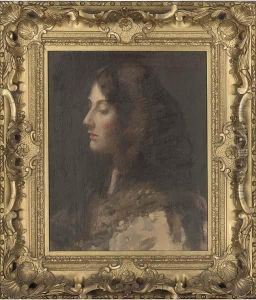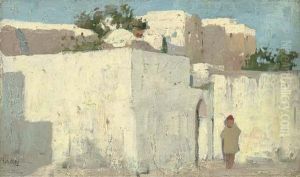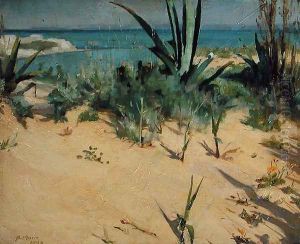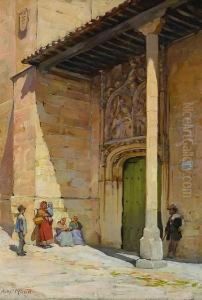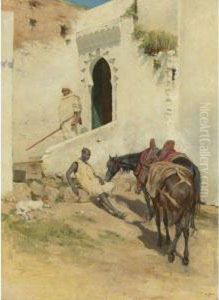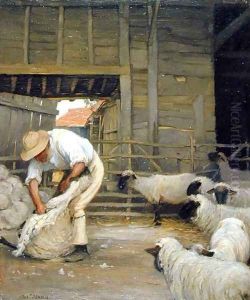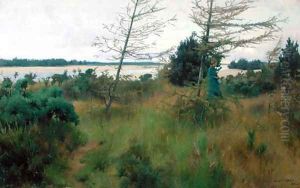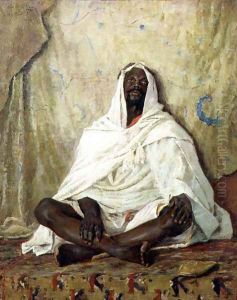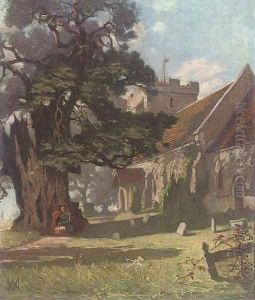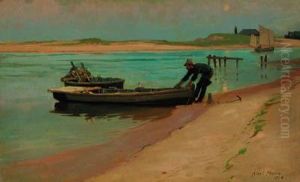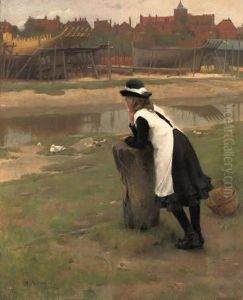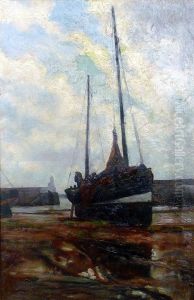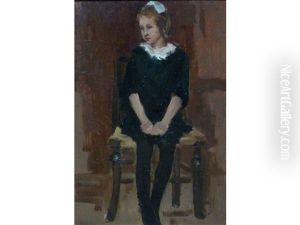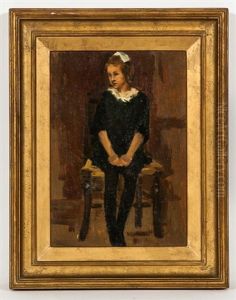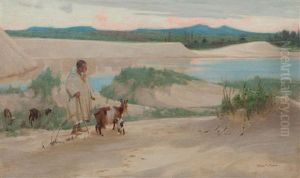Alexander Mann Paintings
Alexander Mann was a Scottish painter known for his contributions to genre painting, a style that depicts scenes of everyday life. Born on January 22, 1853, in Glasgow, Scotland, Mann showed an early interest in art. He embarked on his formal training at the Glasgow School of Art and subsequently continued his studies at the Royal Academy Schools in London. After his education in Britain, Mann traveled to Paris, where he was greatly influenced by the works of contemporary French artists, particularly those associated with the Barbizon School who were known for their realistic and naturalistic landscapes.
Mann's early work often focused on rural Scottish life and the landscapes of his homeland, but his style evolved as he absorbed the influences of French plein-air painting. He became adept at capturing the effects of light and atmosphere, which became a hallmark of his work. In 1881, Mann exhibited his painting 'A Bead Stringer of Venice' at the Royal Scottish Academy, which marked a turning point in his career and established him as a significant figure within the Scottish art scene.
Throughout the 1880s and 1890s, Alexander Mann's reputation grew, and he exhibited widely, not only in Scotland and England but also internationally. His works were displayed in prestigious venues such as the Paris Salon, the Royal Academy in London, and the Glasgow Institute of Fine Arts. Mann was also an active member of the Glasgow Art Club, which was a hub for artists, art lovers, and collectors, promoting the arts in Scotland.
Despite his success, Mann struggled with health issues later in life, which affected his productivity. Nonetheless, he continued to paint and exhibit until his death. Alexander Mann passed away on January 26, 1908, leaving behind a legacy that had a lasting impact on Scottish art. His paintings, characterized by their empathetic portrayal of ordinary people and their environments, continue to be celebrated for their technical skill and emotive qualities, capturing a unique vision of life at the turn of the century.


